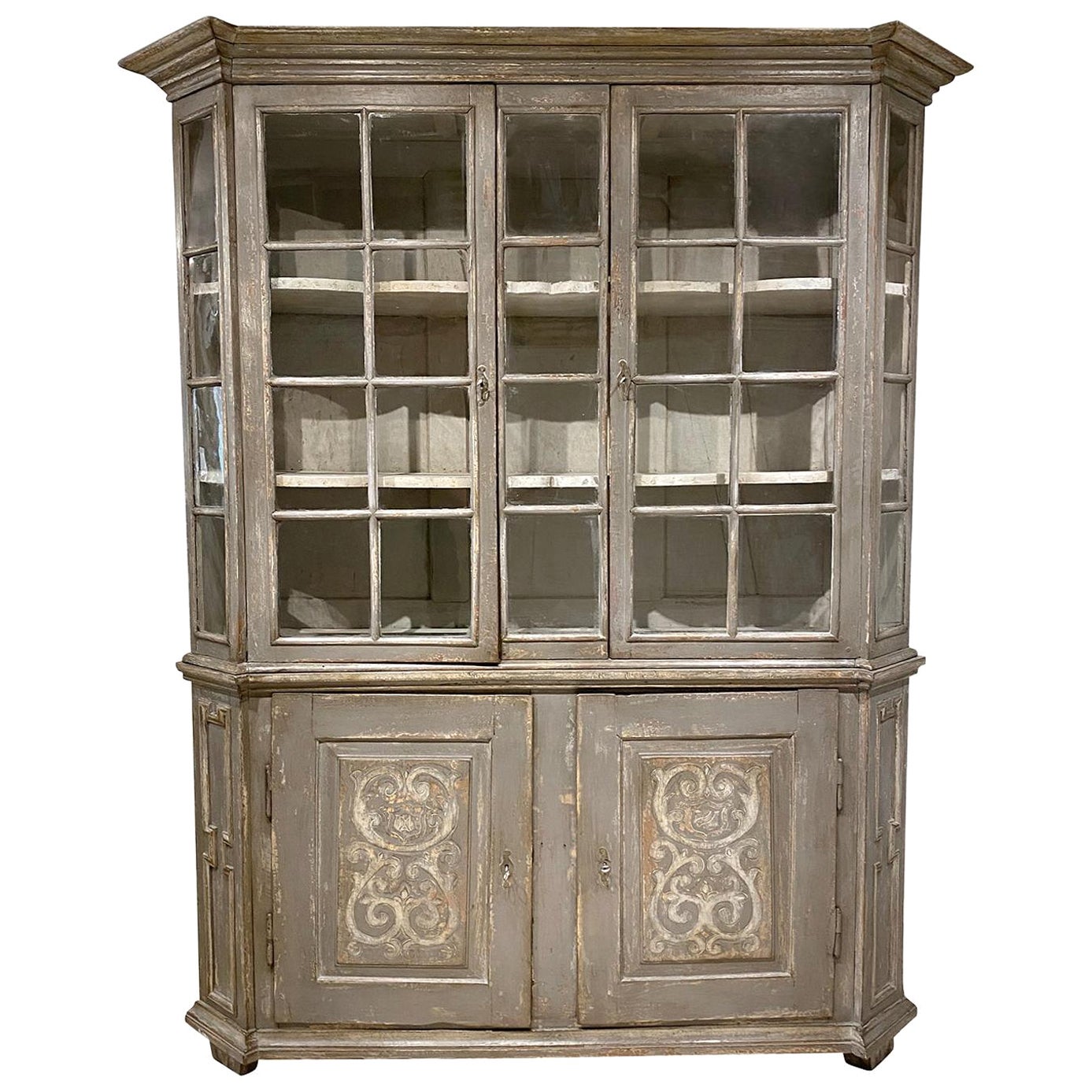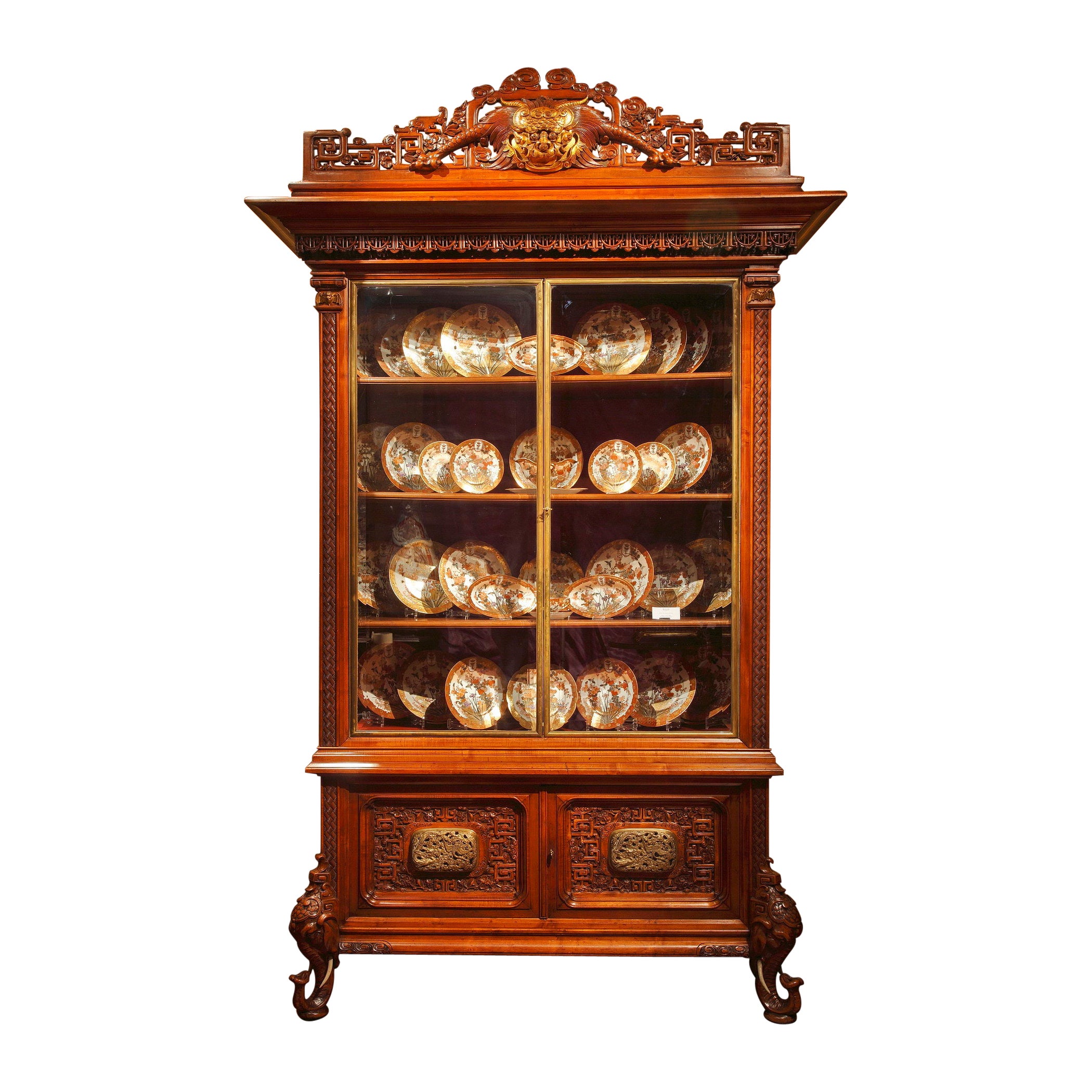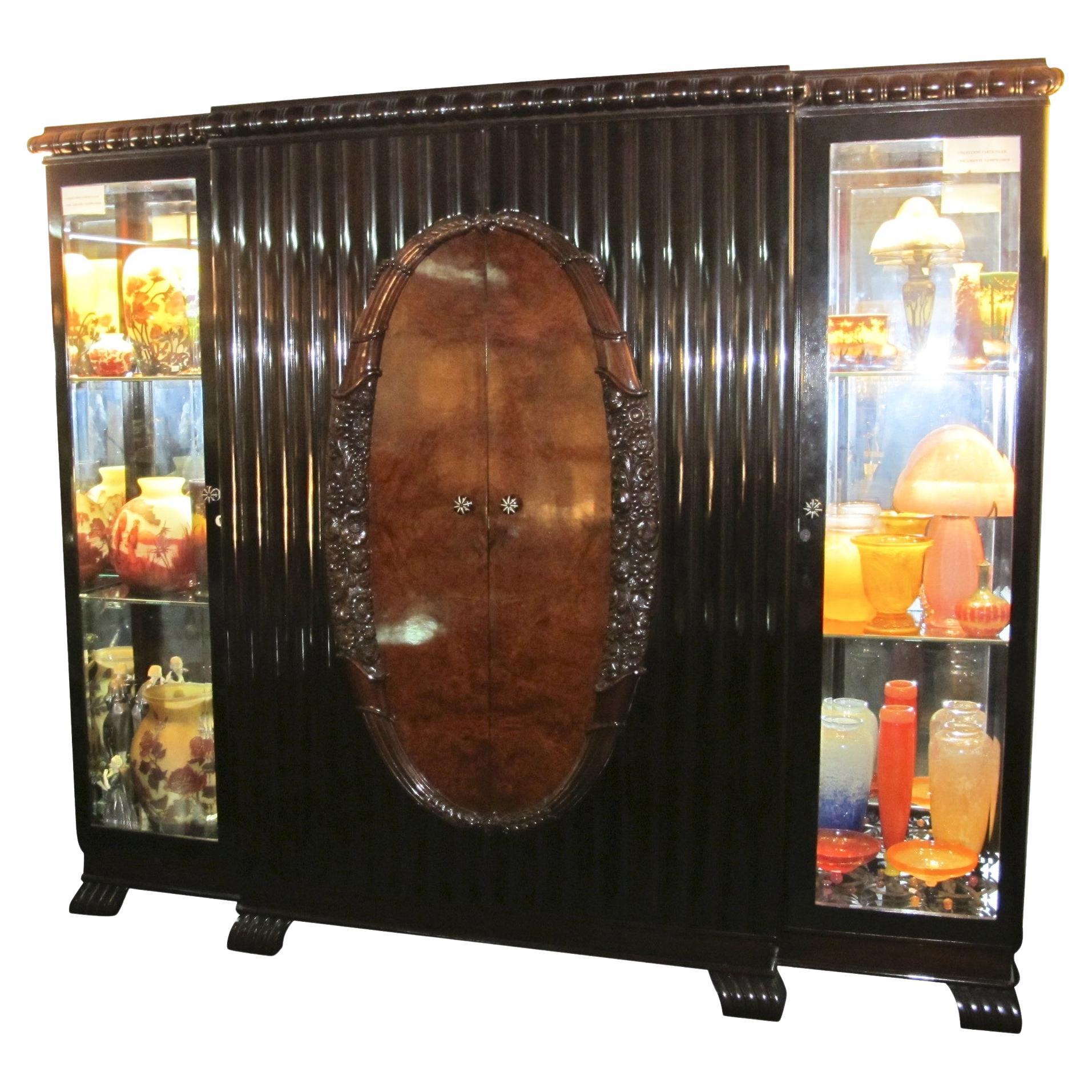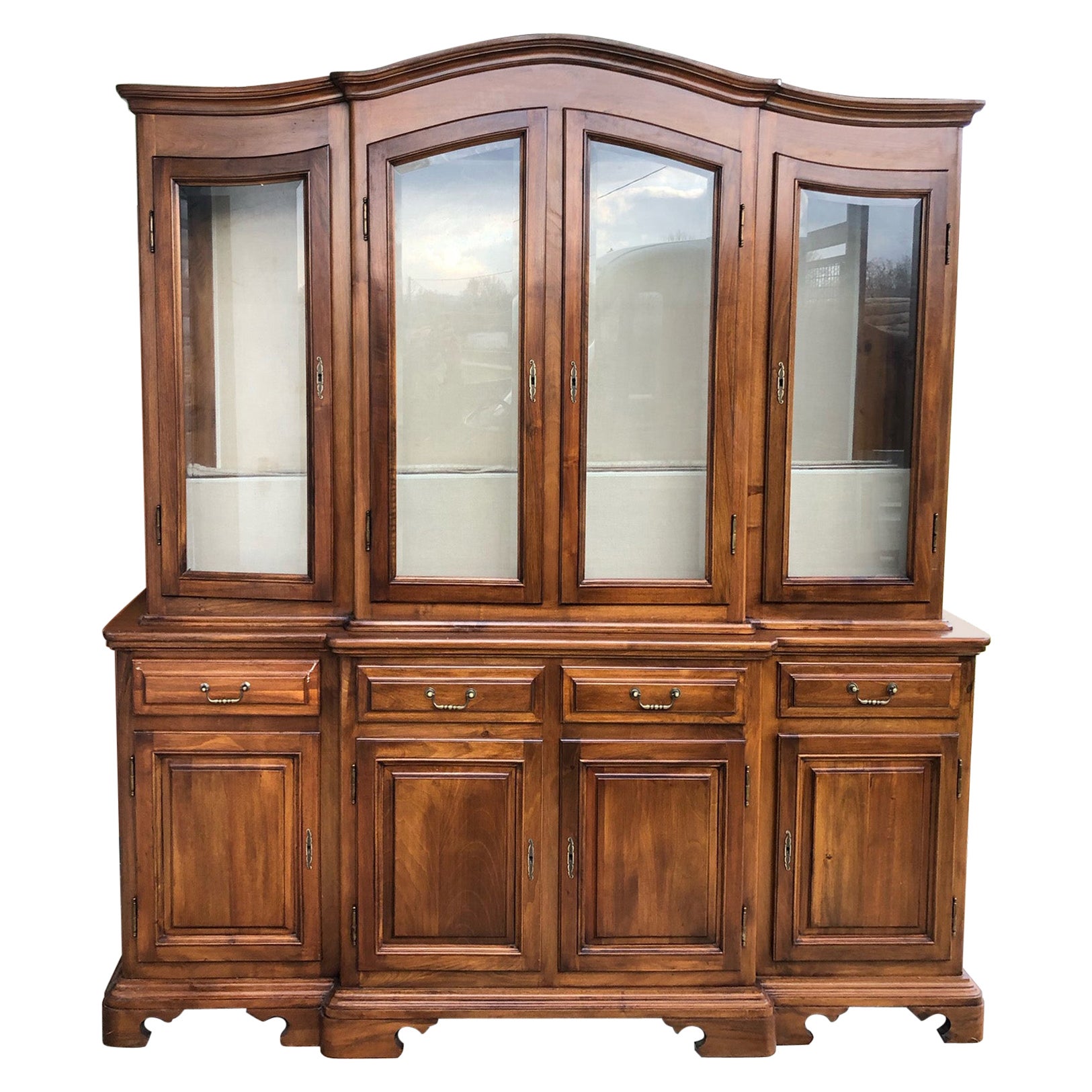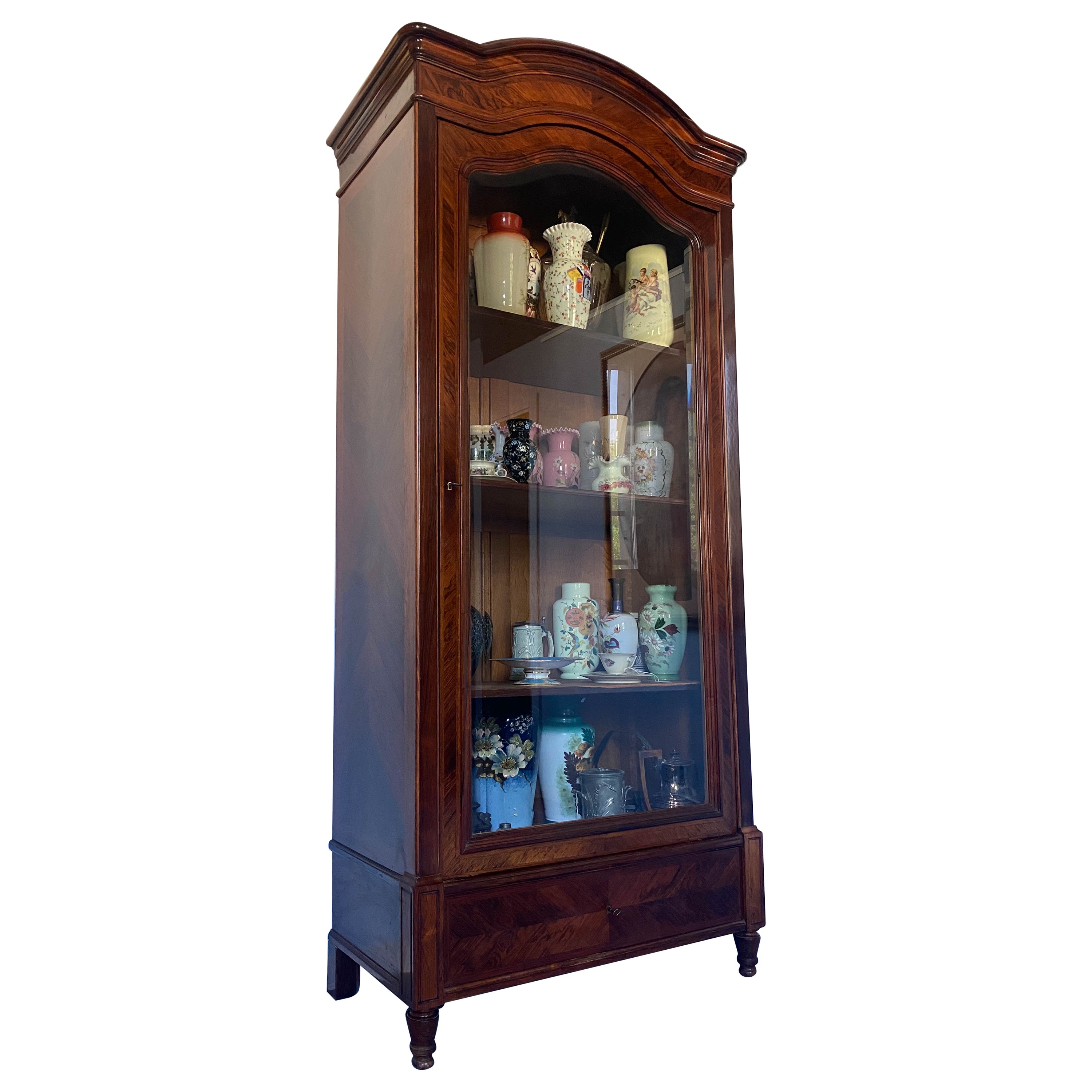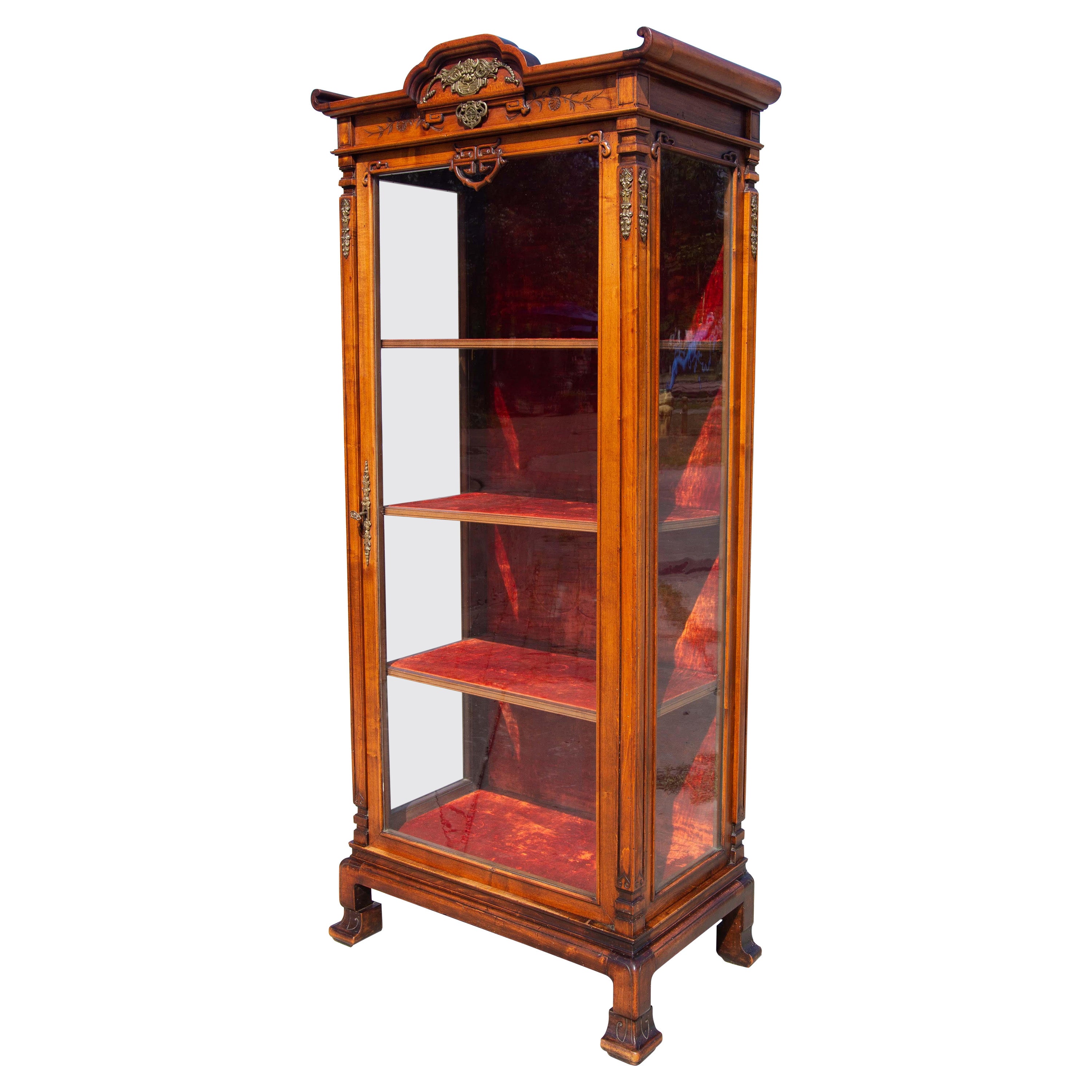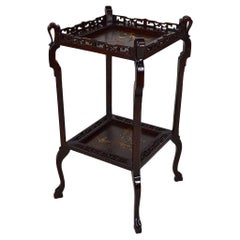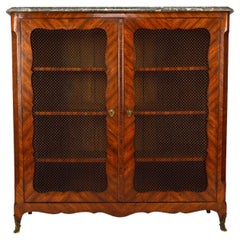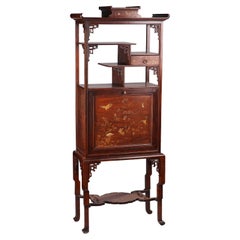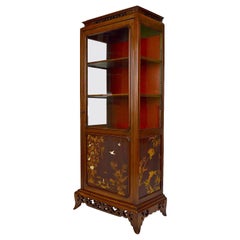
Showcase with Inlaid Panels, attributed to Perret and Vibert, Japonisme, 1880
View Similar Items
Want more images or videos?
Request additional images or videos from the seller
1 of 21
Showcase with Inlaid Panels, attributed to Perret and Vibert, Japonisme, 1880
About the Item
- Attributed to:Perret et Vibert (Cabinetmaker)
- Dimensions:Height: 63 in (160 cm)Width: 28.35 in (72 cm)Depth: 16.15 in (41 cm)
- Style:Japonisme (Of the Period)
- Materials and Techniques:
- Place of Origin:
- Period:
- Date of Manufacture:circa 1880
- Condition:Refinished.
- Seller Location:VÉZELAY, FR
- Reference Number:1stDibs: LU6868230567462
About the Seller
5.0
Platinum Seller
These expertly vetted sellers are 1stDibs' most experienced sellers and are rated highest by our customers.
Established in 2017
1stDibs seller since 2022
19 sales on 1stDibs
More From This SellerView All
- Pedestal Table in Carved Wood and Lacquered Panels, Japonisme France, circa 1880By Perret et VibertLocated in VÉZELAY, FRSuperb pedestal table / gueridon / side table in carved wood whose feet end in hooves. Presence of 2 lacquered Asian-inspired trays with animal and plant scenes: birds, insects, flowers... In excellent condition, restored. Art Nouveau Japonism, France, around 1880-1890. Attributed to the Maison des Bambous / Alfred Perret and Ernest Vibert. Founded in 1879 in Paris, the Maison des Bambous specializes in the production of bamboo furniture, luxury basketry, the importation of authentically Japanese...Category
Antique 1880s French Japonisme Side Tables
MaterialsWood
$2,173 Sale Price20% Off - Louis XV Bookcase by Pierre Garnier with Inlay Wood and Marble Top, circa 1750Located in VÉZELAY, FRSuperb inlaid bookcase / vitrine / showcase with very thick marble top, feet decorated with bronze and double mesh door. 3 shelves present. In excellent general condition. Key present, the lock works perfectly Louis XV style and period, France, 18th century, around 1750. By the cabinetmaker Pierre Garnier...Category
Antique Mid-18th Century French Louis XV Bookcases
MaterialsMarble, Bronze
$24,456 Sale Price25% Off - Swivel Bookcase Table with Carved Top by Gabriel Viardot, Japonism, circa 1880By Gabriel ViardotLocated in VÉZELAY, FRRare pedestal table / bookcase in Japanese / Chinese / Asian style. Richly carved : top decorated with a dragon, openwork swivel shelves and tripod base carved with clawed legs. Ar...Category
Antique 1880s French Japonisme Bookcases
MaterialsWood
$2,608 Sale Price20% Off - Swivel Bookcase Table with Marble Top by Gabriel Viardot, Japonism, circa 1880By Gabriel ViardotLocated in VÉZELAY, FRRare pedestal table / bookcase in Japanese / Chinese / Asian style, richly carved. With red marble top, swivel shelves and tripod base carved with dragon / demon heads and clawed le...Category
Antique 1880s French Japonisme Bookcases
MaterialsMarble
$3,043 Sale Price20% Off - Art Deco display cabinet / showcase / bookcase in walnut, France, Circa 1920By Maurice Dufrêne, Paul FollotLocated in VÉZELAY, FRCabinet / display case / show case / bookcase with glass door, in walnut. In the style of the productions of Follot, Dufrène. Art Deco. France, Circa 1920. Carved fruit baskets on...Category
Vintage 1920s French Art Deco Vitrines
MaterialsGlass, Wood, Walnut
$2,608 Sale Price20% Off - Art Deco display cabinet / showcase / bookcase in walnut, France, Circa 1920By Maurice Dufrêne, Paul FollotLocated in VÉZELAY, FRCabinet / display case / bookcase with glass door, in walnut. In the style of the productions of Follot, Dufrène. Art Deco. France, Circa 1920. Carved fruit baskets on the door. Pr...Category
Vintage 1920s French Art Deco Vitrines
MaterialsGlass, Wood, Walnut
$2,869 Sale Price20% Off
You May Also Like
- "Japonisme" Vitrine Attributed to A. Giroux, France, Circa 1880By Maison GirouxLocated in PARIS, FRRare aesthetic movement showcase, opening in its upper part by two beveled glass doors framed by brass moldings, in its lower part by two door panels in carved walnut decorated with blooming branches and gilded bronze ornaments representing dragons and birds. The sides are carved, like wicker woven. This showcase is topped by an important carved and gilded walnut cornice depicting a Fô Dog in its center, with a protective power, and rests on elephant head with overtuned trunk shaped feet. This type of elephant head with overtuned trunk shaped feet is a characteristic of the Maison Giroux, which can be found on many objects they produced. Aesthetic movement cabinet, signed Maison Alphonse Giroux...Category
Antique 1880s French Japonisme Vitrines
MaterialsBronze
- Japanese Style Cabinet-Secretary Att. to Perret & Vibert, France, circa 1880By Perret et VibertLocated in PARIS, FRA Japanese style carved wood cabinet, with a painted decor imitating Japanese lacquer, ornamented with flowers, birds and butterflies. Opening onto two drawers and a paper filer, the upright-secretary door is also fitted with red velvet. Surmounted by a drawer and asymmetrical shelves, composed in the Japanese « zen » spirit, the cabinet stands on four legs joined by an engraved stretcher. The great influence of the Far-East, through China and Japan, in the second half of the 19th century French art could be found first in painting and soon after in decorative arts and furniture as well. Following the Franco-English military campaign led in 1860 against the Imperial army in China, the French troops of Napoleon III brought back from the Summer Palace, a part of the Chinese Imperial court treasure, which will make up the famous Chinese Museum of Empress Eugénie at the Fontainebleau Palace. The French artists won’t be long to take inspiration from those exotic and sumptuous objects for their creations, as they used to do in the 18th century, when the best French cabinet-makers adapted the Chinese lacquers on the luxurious royal chests. But the influence of Japan, at the Meiji period (1868-1912), came also very quickly to France, thanks to the opening of the country in the middle of the 19th century, as well as the development of traveling and the amazing Universal Exhibitions, in which Japan participated for the first time in 1867 in Paris. Then many Japanese objects and prints were imported to France and to all Europe, and for which some collectors spent already fortunes. With Manet and Impressionists generation, the passion for Japanese art, more than a simple taste for an exotic style, was still in fashion until the turn of the 19th century. It provoked not only a craze among the French aristocratic families as well as the wealthy Paris high society, wishing renew their mansion inner decoration, but turned also to a real revolutionary movement among the “avant-garde” artists. Those artists, whoever they were, painters, cabinet-makers or designers of ceramic, bronze and crystal objects, adapted then those techniques and naturalistic motifs unknown until this time. Christofle, very famous since 1867 as a silversmith, was also one of the leaders among the inventors of Japanism. He knew how to use Japanese elements to his own splendid works made in silver or “cloisonné” enameled bronze. During the 1878 Paris Universal Exhibition, Christofle presented with great success his life-sized bronze Japanese ladies torcheres, executed by the renowned sculptor Guillemin. Another famous company to be mentioned, is “L’Escalier de Cristal”, producing art objects and furniture, all of high standard quality and innovating much with their Japanese decor. Highly remarked during the Universal Exhibitions, “L’Escalier de Cristal” collaborated with the greatest artists, such Gallé and Rousseau for glass- and ceramic wares, and the cabinet-makers Lièvre and Viardot, whom made furniture including sometimes authentic Japanese elements. In 1872, Alfred Perret and Ernest Vibert opened in Paris, at 33 rue du Quatre-Septembre a store that offered “natural bamboo furniture and cane seats” and all kinds of textile fittings for furniture. This furniture used for winter gardens and terraces of mansions knew then a resounding success. They developed their business around 1884 with their Japanese style furniture, very close to that executed by Gabriel Viardot (1830-1906). In 1886, the company appearing in the category of “Chinoiserie and Japoneries” offered, in addition to furniture and seating creation, works of art and inlaid furniture directly imported from the Far East ; an activity that expanded rapidly. Their exotic fantasy furniture presented at the Universal Exhibition of Paris in 1889 and 1900, rewarded them two silver medals. In 1894, the company was listed under the name “Perret et Vibert”, headed by the son of Alfred Perret and Ernest Vibert. The same year, they redesigned their store on rue du Quatre-Septembre, creating ten new show-rooms, showing complete furniture sets of Japanese and Chinese style inspiration. It was not until 1895, that the company was finally named “La Maison des Bambous” and organized then in their shops an “exhibition of country furniture and seats for castles and villas”, which was visited by Empress Eugenie to furnish her villa Cyrnos at Cap Martin. She actually was a regular customer of the “Maison des Bambous” as she bought repeatedly furniture. In October of the same year, the king of Greece...Category
Antique 1880s French Japonisme Secretaires
MaterialsWood
- Old Wooden ShowcaseLocated in AIGNAN, FRWooden showcase from the 1960s. The color of the wood is bright and warm. Its small size, its glass doors and sides, the curve of its feet give it a lot of character and elegance....Category
Mid-20th Century French Vitrines
MaterialsGlass, Wood
$1,619 - Black Lacquered Umbertino Style Bookcase Showcase with Amber GlassLocated in Cesena, FCBlack lacquered Umbertino style bookcase display case Umbertino-style showcase/bookcase, second half of the 1800s. The cabinet is black lacquered with amber glass panes and two...Category
Antique Mid-19th Century Italian Bookcases
MaterialsWood
- Furniture in Wood, Art Deco, "Attributed to Louis Süe and André Mare", 1930By Andre MareLocated in Ciudad Autónoma Buenos Aires, CAmazing bookcase Art Deco Style: French We have specialized in the sale of Art Deco and Art Nouveau and Vintage styles since 1982.If you have any questions we are at your disposal. Pushing the button that reads 'View All From Seller'. And you can see more objects to the style for sale. Attributed to Louis Süe and André Mare Louis Süe (14 July 1875 – 7 August 1968) was a French painter, architect, designer and decorator. He and André Mare co-founded the Compagnie des arts français, which produced Art Deco furniture and interior decorations for wealthy customers. He also designed buildings and interiors, including the interiors of two passenger liners. Marie-Louis Süe was born on 14 July 1875 in Bordeaux. He was the grand nephew of the writer Eugène Sue.His father was a wine merchant. After graduating from secondary school he entered the Collège Sainte-Barbe in Paris to prepare for the École Polytechnique. However, in 1893 he left Sainte-Barbe and entered the École des Beaux-Arts where he studied painting in the studio of Victor Laloux (1850–1937). During this period he also explored architectural design, and was awarded medals for his work. He gained his diploma in 1901. Süe made friends at the Beaux-Arts with the painters Pierre Bonnard, Roger de La Fresnaye, André Derain and André Dunoyer de Segonzac. In 1902 the Salon des Indépendants and the Salon d'Automne showed his work. Süe's work always combined an understanding and respect for traditional forms with a willingness to explore the new. n 1919 Süe and André Mare founded the Compagnie des arts français (French Arts Company) and in 1921 published their first designs of furniture, wallpaper, tapestries, silverware and ceramics. The company employed many artists and craftsmen to meet the needs of their sophisticated and wealthy clientele for interior decoration. The Metropolitan Museum acquired examples of their furniture as early as 1923. Their Art Deco works, typically with flower designs, were both elegant and practical. Süe and Mare decorated interiors such as the Polish Embassy in Paris and the home of Jean Patou.[2] In their joint work Architectures (1921) Sue and Mare asserted that Art Nouveau was based on a synthesis of fine and decorative arts. Their commercial designs often had simplified forms with rich materials. In 1922 Süe designed the industrial town of Lens-Méricourt for the French Northern Railway company.[1] In 1922 the Compagnie des arts français obtained financial support from Gaston Monteux, owner of the Raoul shoe firm.Süe and Mare worked together again for the 1925 International Exposition of Modern Industrial and Decorative Arts in Paris, where they built a contemporary art museum and the Fountain pavilion on the Esplanade des Invalides. They showed a luxurious room in the grand salon with furniture, carpet, wallpaper and decorations in new forms linked to traditional designs.They also collaborated that year on the interior decoration of the SS Île de France...Category
Vintage 1930s French Art Deco Bookcases
MaterialsGlass, Wood
- French Art Nouveau Fruitwood Wooden Showcase Vitrine with Four DrawersLocated in Miami, FLFrench fruitwood wooden showcase vitrine with four-drawer Measures: Height to the drawers 33.46in.Category
Early 20th Century French Art Nouveau Vitrines
MaterialsGlass, Fruitwood
$5,200 Sale Price20% Off
Recently Viewed
View AllMore Ways To Browse
Wooden Furniture
Wooden Furniture Used
Bamboo Furniture Used
Bamboo Used Furniture
Used Bamboo Furniture
Antique Wooden Furniture
Wooden Furniture Antique
Wooden Antique Furniture
Carved Wooden Furniture
Antique Bamboo Furniture Antiques
Antique Bamboo Furniture
Antique Bamboo Antique Furniture
Bamboo Antique Furniture
Antique Wood Wax
Bronze Showcase
Antique Showcase Cabinet
Inlaid Lacquer
Inlaid Bird
